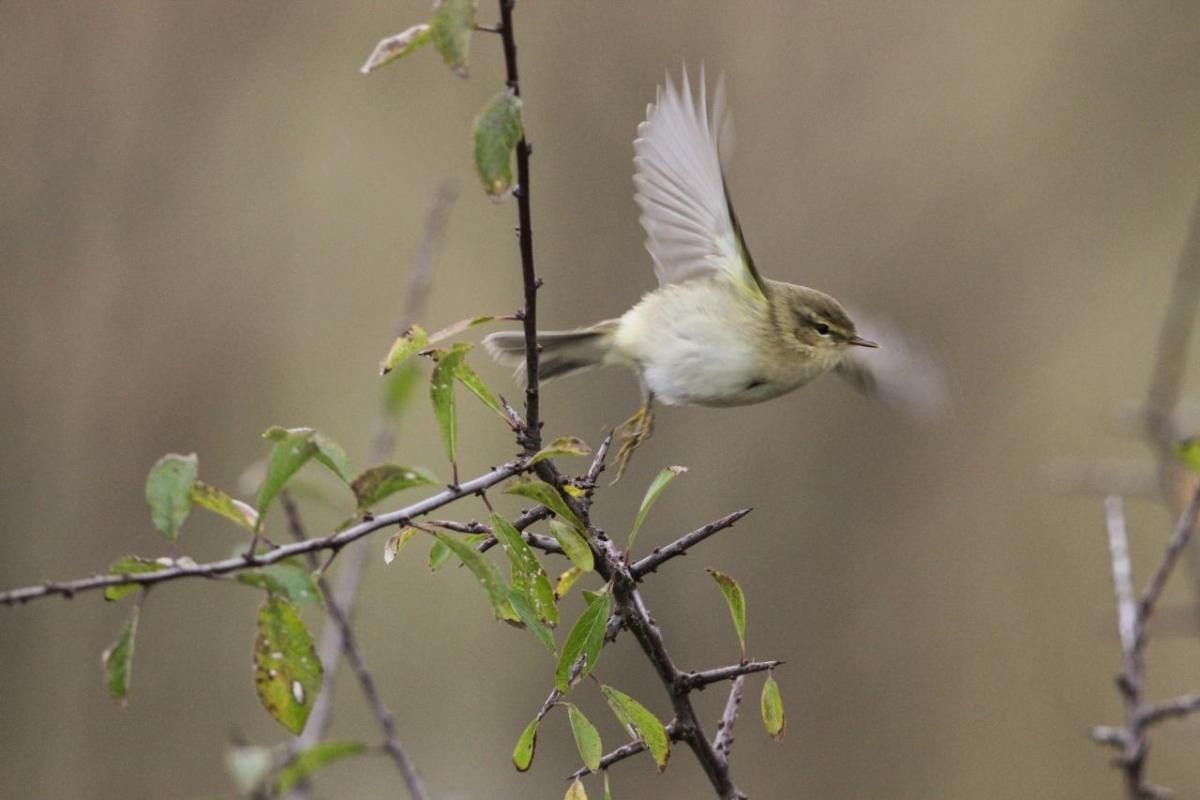Cisco’s Our Corporate Purpose Blog: The complexity of the web of life
By Emma Reid

This post was written by Cecilia Nilsson, a biologist currently based and working as a researcher at the Department of Biology at Lund University. Her work focuses on using different kinds of radars and data science to monitor animal movements at scale, with a focus on migration systems and bird population conservation. She also uses these research techniques to investigate conflicts that arise when humans encroach on aerial habitats, such as wind power installations and bird strikes at airports.
Join us on October 26, 2023 to hear Cecilia Nilsson present on Cisco Networking Academy’s Women Rock-IT program, and to learn how analyzing weather radar data and utilizing machine learning for biological purposes is saving the lives of birds.
The Women Rock-IT Program addresses the gender gap in STEM-related subjects. Established in 2014, the program has reached an audience of over 2 million people, featuring 156 female speakers, 91 live TV broadcasts and 78 blogs. As a result, more than 974,000 people have enrolled in technology courses.
The loss of biodiversity is one of the greatest threats facing humanity. By destroying habitats and threatening the survival of species, we are pulling out threads from the web of life that sustains us, and supplies us with food, oxygen, and clean water. By weakening it we are also reducing nature’s resilience to long-term changes and extreme events – with less genetic variation and fewer individual organisms, ecosystems become more vulnerable to threats such as droughts, flooding and disease.
A new approach to conservation
The complexity of the web of life around us, with all its variation, fascinated me from a young age and made the choice of studying biology an obvious one. However, while studying at university I soon realized that I was more drawn to technical methods and theoretical aspects in the field of biology, and I strayed far from practical conservation applications. As a PhD student in Lund, Sweden, I used tracking radar to study the details of bird flight. Using a discarded military tracking radar, we could track the movement of free-flying birds in the sky with very high precision, registering every wing beat. We used this data to test evolutionary predictions of bird movements and bird flight. I loved learning about radar technology and delving into the details of bird flight–but I was bothered by the feeling of documenting something we were slowly losing.
“I wanted to contribute, to learn more and to protect it.”
After finishing my PhD, I stayed in the academic world and started working as a post doc, and later a university researcher, focused on the use of weather radar networks for biological applications. The more I learned about weather radars, the more I could see their potential as a conservation tool. Weather radars constantly monitor the sky, registering everything, not only weather, but also birds and insects. This had been known for a long time, but the complexities of extracting from the huge datasets weather radars produce had limited its use in biology.
Advancements in technology unlocked opportunities
About 10 years ago, computer processing power and storage had advanced to the point that large-scale use of weather radar data for biology started to be possible. Since then, I have been working in the small–but rapidly expanding–academic field of analyzing weather radar data for biological purposes. Weather radars emit radio waves (usually in C or S-band) and then listen for the echo of objects in the sky reflecting the wave back to the radar antenna.
All objects in the sky return echoes, from tiny raindrops to large aircraft. Weather radars are mainly built for detecting rain droplets, which are used to map and track precipitation systems. But by focusing on specific characteristics of the returned echo, as well as information on the movement of the object creating the echo, we can separate out biological objects such as birds, insects, and bats from other data. Machine learning classification algorithms have allowed us to fine-tune this segmentation and analyze large datasets.
Weather radar data offers several advantages for biodiversity monitoring that are very difficult to obtain by other means. First of all, they monitor a habitat that we know little about and have few other ways of mapping: the aerial habitat. Many flying animals spend large parts of their life in the air, making it a crucial part of their habitat. Secondly, weather radar data provides something that is very rare in the field of conservation biology: long time series of more or less standardized data. By using long time series of archived data we can identify changes in the amount and movement patterns of flying animals, and by using networks of stations we can do this across large scales, identifying areas with decreasing populations.
Applying new techniques to protect wildlife and their habitats
Some of the practical applications we have developed are predictive models that can show when large numbers of birds are on the move during migration. This is currently being used to set up different automatic warning systems to limit dangers for migratory birds and humans alike. For example, turning off lights on high rise buildings to avoid bird crashes, and pausing wind turbines in migration corridors to avoid bird collisions with rotor blades. Another application alert in development warns poultry farmers when large numbers of wild birds are flying over their farms, allowing them to take action to protect their livestock against avian influenza and other pathogens the birds may carry. I have also been involved in using large-scale information from weather radars to map bird movements around airports, increasing knowledge of how bird migration patterns affect the risk of bird strikes between airplanes and birds.
I feel very lucky to have been a part of establishing the use of weather radar data as a biodiversity monitoring tool over the last decade, and I believe this technique has tremendous potential for the future. I am happy that I now contribute to the monitoring of at least one small part of the diverse web of life, and I will continue exploring the ways we can use this tool to assess and address threats to biodiversity and the natural world around us.
Register to hear Cecilia and listen to other women who rock IT
View original content here.

